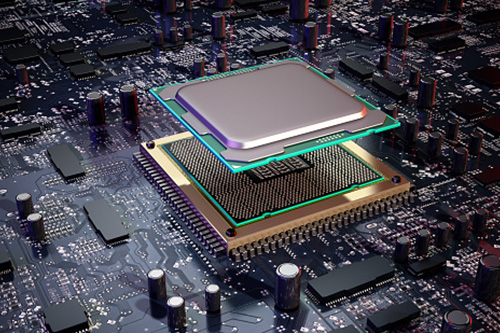The technology known as Gaming as a Service has been around for 20 years. But in many ways it’s just getting started.
The technology is already enjoyed by literally millions of gamers worldwide. But new advances in AI and edge computing are making a big difference. So are faster, more consistent internet connections.
And coming soon should be a mix of virtual and augmented reality (VR & AR) headsets. They could bring gaming to a whole new level.
But how does GaaS work? Let’s take a look.
Cloud + edge = GaaS
GaaS is to video games what Netflix is to movies. Like Netflix, GaaS is a streaming platform that pushes content from the cloud to PCs, smartphones and other personal devices (including gaming consoles with the appropriate updates) on demand.
GaaS originates in the cloud. There, data centers packed with powerful servers maintain the gaming environment, process user commands, determine interaction between players and the virtual world, and deliver real-time results to players.
If the cloud is GaaS’s brains, then edge computing networks are its arms. They reach out to a worldwide base of users, connecting their devices to the gaming cloud.
Edge devices also keep things speedy by amplifying or, if necessary, taking over various processing duties. This helps reduce latency, the time lag between when a command is issued and when it’s executed.
Latency is especially detrimental to gamers. They rely on split-second actions that can make the difference between winning and losing. For them, lower latency is always better.
Device choice
GaaS is innovative at the user end, too. GaaS can interface with a wide array of client devices. That offers gamers far more flexibility than they get with traditional gaming models.
With GaaS, users are no longer tied to a specific gaming PC or console such as the Microsoft Xbox or Sony PlayStation. Instead, gamers can use any supported device with a decent GPU and a stable internet connection speed of at least 10 to 15 Mbps.
To be sure, some GaaS games—one example is the super-popular Fortnite—require a mobile or desktop app. But these apps are usually free.
Other cloud-based games are designed to work with any standard web browser. This lets a gamer pick up wherever they left off, using nearly any internet-connected device anywhere in the world.
Big business
If all this sounds attractive, it is. One of the first GaaS titles, World of Warcraft, is still active nearly 20 years after its initial launch. In 2015—the last time its publisher, Blizzard Entertainment, reported usage numbers—World of Warcraft had 5.5 million players.
Even more popular is Fortnite, introduced in 2017. Today it has more than 350 million registered users. In part, that’s because of the game’s flexible business model: Fortnite players can sign up and enjoy basic gameplay for free.
Instead of charging these users a fee, Fortnite’s developer, Epic Games, makes money from literally millions of micro-transactions. These include in-game purchases of weapons and accessories, access to tournaments and other gated experiences, and the purchase of a new “season,” released four times a year.
Super-popular games like Fortnite and World of Warcraft have help create a lucrative and compelling business model. This, in turn, has given rise to a new breed of GaaS tech providers.
One such operation is Blacknut, a France-based cloud gaming platform. Together with Australian outfit Radian Arc, Blacknut provides a GaaS digital infrastructure powered by AMD-based GPU servers designed and distributed by Supermicro.
What could go wrong?
Does GaaS have a downside? Sure. No platform is without its flaws.
For one, cloud gamers are at the mercy of the cloud. If a cloud provider experiences a slowdown or outage, a game can disappear until the issue is resolved.
For another, unlike a collection of game titles on physical media, GaaS gamers never really own the games they play. For example, if Epic decided to shut down Fortnite tomorrow, 350+ million gamers would have no choice but to look for alternate entertainment.
Internet access can be an issue, too. Those of us in first-world cities tend to take our high-speed connections for granted. The rest of the world may not be so lucky.
Future of GaaS
Looking ahead, the future of GaaS appears bright.
Advances in AI-powered cloud and edge computing will encourage game developers to create more nuanced and immersive content than ever before.
Faster and more consistent internet connections will help. They’ll give more power to both the bandwidth-hungry devices we use today and the shiny, new objects of desire we’ll clamor for tomorrow.
Tomorrow’s devices will surely include a mixture of VR and AR headsets. These could attach to other smart devices that enhance gameplay, like the interactive bodysuits foretold by movies such as Ready Player One.
GaaS will get smaller, too, as new mobile devices come to the market. Cloud-gaming titles, already a mainstay of mobile gamers, should be further empowered by next-generation mobile processors and faster, more reliable wireless data connections like 5G.
We’re witnessing the evolution of gaming as multiple clients interact with low latencies and high-quality graphics. Welcome to the future.











